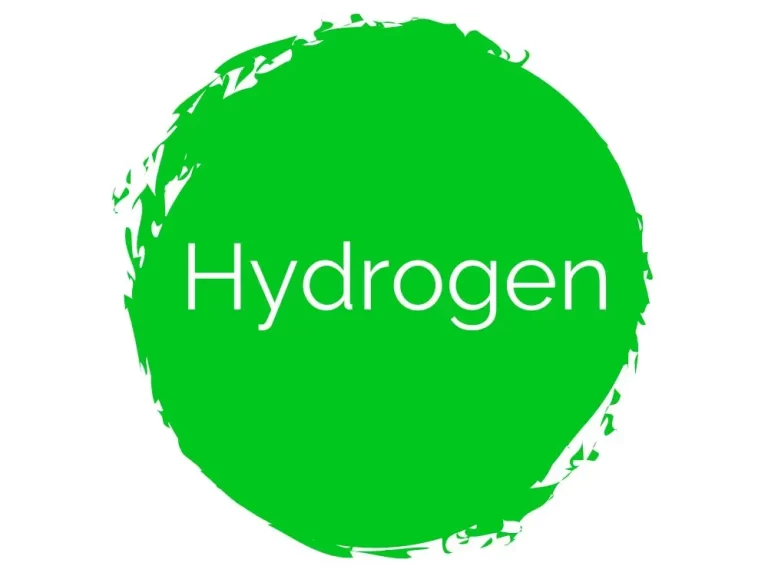Hydrogen Energy: Key Uses in a Sustainable Future
Hydrogen energy has emerged as a promising contender in the race for clean and sustainable energy sources.
But what exactly is it, and can it truly help us achieve net zero emissions? Here’s a dive into the world of hydrogen energy, covering the forms it takes, its uses and its challenges.
Understanding Hydrogen

Hydrogen, the most abundant element in the universe, is a clean-burning fuel.
When used in a fuel cell, it reacts with oxygen to produce electricity and water vapor as the only by-product.
This makes it highly attractive as a potential fuel source to achieve greenhouse gas emission reductions and support Net Zero commitments.
However, the Hydrogen energy’s true emissions depend on the method used to generate the hydrogen fuel itself, prior to using for energy production.
Different Forms of Hydrogen:

There are various ways to produce hydrogen, resulting in different classifications based on the source of energy used:
Green Hydrogen:
This is the holy grail of clean hydrogen production. It’s generated by splitting water molecules (electrolysis) using renewable electricity sources like solar or wind.
Green Hydrogen therefore generates zero carbon emissions, making it the most sustainable option.
Grey Hydrogen:
The most common form currently in use, currently produced using fossil fuels like natural gas through a process called steam reforming. This process combines natural gas and heated water, with Hydrogen one of the resulting products.
However, this process also releases significant carbon dioxide, negating the environmental benefit that using this hydrogen can achieve.

Blue Hydrogen:
Blue Hydrogen is essentially the same process as Grey Hydrogen, but the carbon emissions are captured and stored using technology known as carbon capture and storage (CCS).
Whilst this reduces the environmental impact, effective CCS is still under development and has limitations.
Brown Hydrogen:
Brown hydrogen uses coal to enable the hydrogen production. This makes the process a high emission activity, with coal being the highest carbon emitting form of fossil fuel energy forms.
Other terms in use:
Aside from the above, the terms Pink Hydrogen (hydrogen produced by nuclear powered electrolysis) and Turquoise Hydrogen (using methane to produce hydrogen and solid carbon) are ones to note.
Applications of Hydrogen Energy

Hydrogen’s versatility allows for its application in various sectors:
Transportation:
Hydrogen fuel cell vehicles offer a clean alternative for cars. They boast longer ranges than battery electric vehicles and faster refuelling times.
However, the infrastructure for hydrogen refuelling stations is still limited and costly to develop.
Adoption so far is primarily linked to HGVs and buses.
Decarbonising Heavy Industry:
Industries like steel production and fertilizer manufacturing rely on high-temperature processes that are difficult to electrify.
Hydrogen can be a clean fuel source in these sectors, depending the form of hydrogen production used.

Energy Storage:
Hydrogen also offers a long-term energy storage solution.
Excess renewable energy can be used to produce hydrogen, which can then be stored and used later to generate electricity when needed.
Heating:
Hydrogen is proposed as an alternative to natural gas for the heating of buildings.
In fact, some manufacturers are already producing natural gas boilers that are ‘hydrogen ready’, in case they require adapting to hydrogen as the incoming fuel.
Power Generation:
Hydrogen can be used in turbines to generate electricity, especially during periods of low renewable energy production. It can also provide backup power and help balance the grid.
Challenges to Widespread Adoption

While hydrogen holds immense potential, there are significant challenges to overcome before it becomes a mainstream energy source:
Production Costs:
Currently, green hydrogen production is more expensive than traditional methods. Technological advancements and economies of scale are needed to bring down the costs.
Infrastructure Development:
A vast network of hydrogen re-fuelling stations and pipelines needs to be built for widespread transportation use.
In the case of using existing natural gas pipelines to supply hydrogen as a heating fuel, the existing infrastructure is likely to prove ‘leaky’ due to the small size of hydrogen molecules compared to natural gas.
Storage and Transportation:
Hydrogen gas has a low energy density by volume, making storage and transportation inefficient.
Research on improved storage methods is ongoing and will require significant commercial investment to continue progress.
Public Perception and Acceptance:
The general public are relatively unfamiliar with Hydrogen, and it is sometimes associated in public consciousness with risk of explosions.
Adoption of Hydrogen use for activities such as transport or heating would therefore require work to familiarise the public with its value.

Hydrogen Energy: Part of a Sustainable Future
Hydrogen energy is a promising solution for a sustainable energy future.
While challenges remain, advancements in production methods, infrastructure development, and storage solutions are paving the way for its wider adoption.
As we strive for net zero, hydrogen has the potential to be a game-changer, particularly in sectors where electrification is not a viable option.
However, it’s important to remember that hydrogen is not a magic bullet.
It should be seen as a complementary solution alongside energy efficiency and renewable energy sources like solar and wind.
By working together, these technologies can power a cleaner and more sustainable future for our planet.






